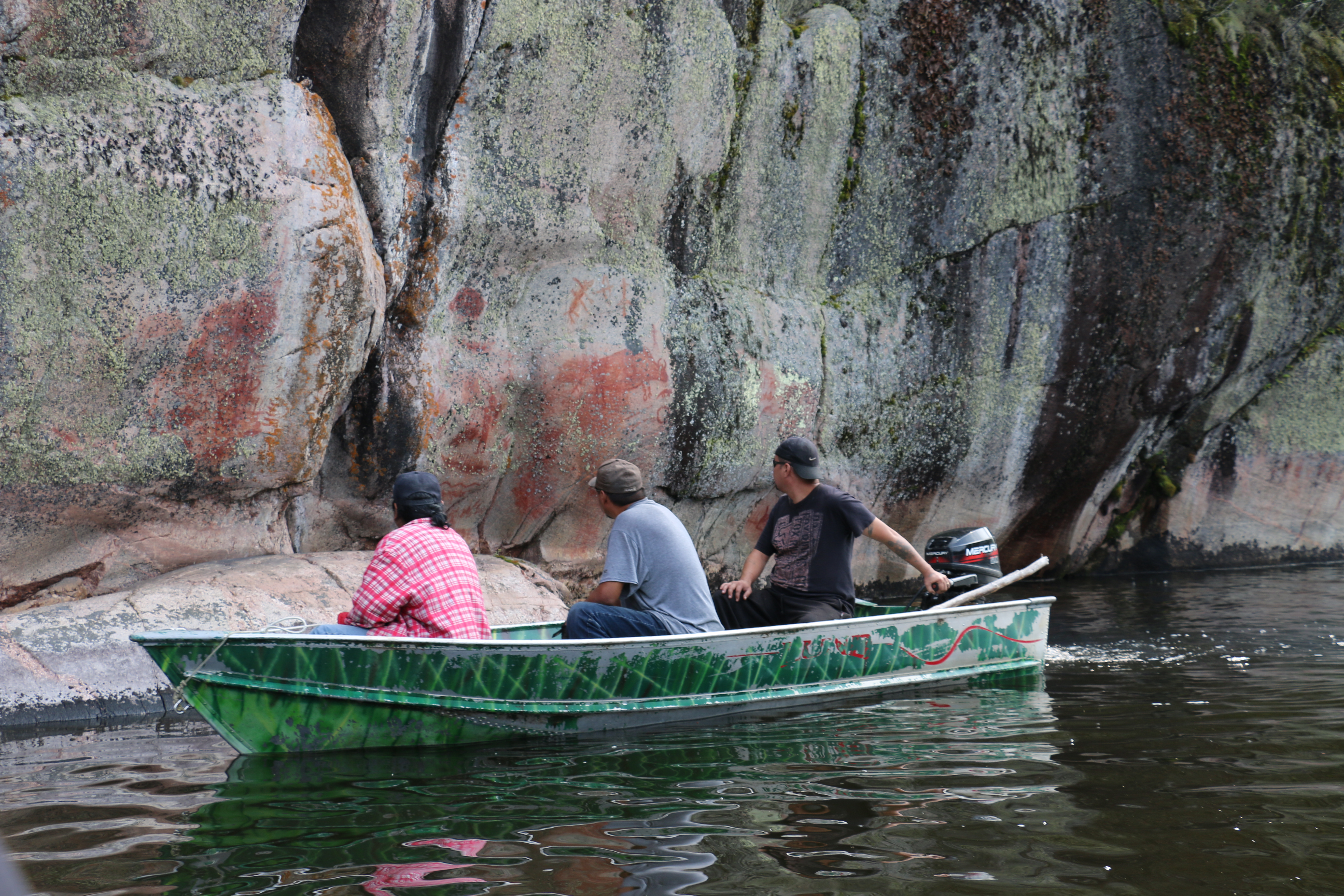

Pimachiowin Aki First Nations and the Pimachiowin Aki Corporation developed a Guardians Program in 2016 to implement the strategic direction set out in approved management plans of ensuring community well-being, raising funds, supporting local economic development, creating opportunities for Elders and youth to work together, maintaining/enhancing our cultural tradition, and ensuring compliance with customary laws and policies. Capacity and skills have been built among community members in communication, record-keeping, survival, good health, use of GPS to collect and record geographic information. Guardians are community members that observe, record and report on the health of ecosystems and cultural sites, educate the public about how to be good stewards of the cultural landscape, work with provincial government land and resource managers, and conserve pictographs, petroforms, archaeological sites, cultural sites, and intangible values shaping Anishinaabe connections with the Site including oral traditions central to the expression and intergenerational transmission of Akiiwi-gikendamowining (land-based knowledge), customary laws, and geographical names.
- Funding (Guardians’ wages and operating costs, Elders’ honoraria, workshops and training).
- Strong leadership at community-level.
- Knowledge of the indicators of social, economic, cultural and environmental values of the site.
- Good relationships with leaders, community members, Western modern scientists and government land managers (mutual respect, trust, honesty, parity in decision-making).
- Opportunities to share experiences with other Guardian and stewardship programs.
- Success of the Guardians Program depends on keeping Guardians employed on a full-time basis, and on maintaining connections between Guardians and Elders and youth.
- Guardians initiatives risk failing completely or produce disappointing outcomes if careful planning is not completed before monitoring activities start. For monitoring to be successful, data and information needs to be stored, organized and distributed in ways that ensure it is useful, maintains its quality and credibility, and protects confidential information.
- Compiled GIS (Geographical Information System) based inventories and databases are the best way to identify data gaps, which can then be used to update monitoring priorities and plans. A monitoring framework and information management system provide critical information for governance and decision making.
- Elders and other knowledge-keepers are engaged in developing a broader set of indicators and metrics to provide a reliable statement on the condition of - and trends in - ecosystem health and the cultural landscape.